December 7th, 2022 — 11:27pm
Israel: A Simple Guide to the Most Misunderstood Country on Earth by Noa Tishby.
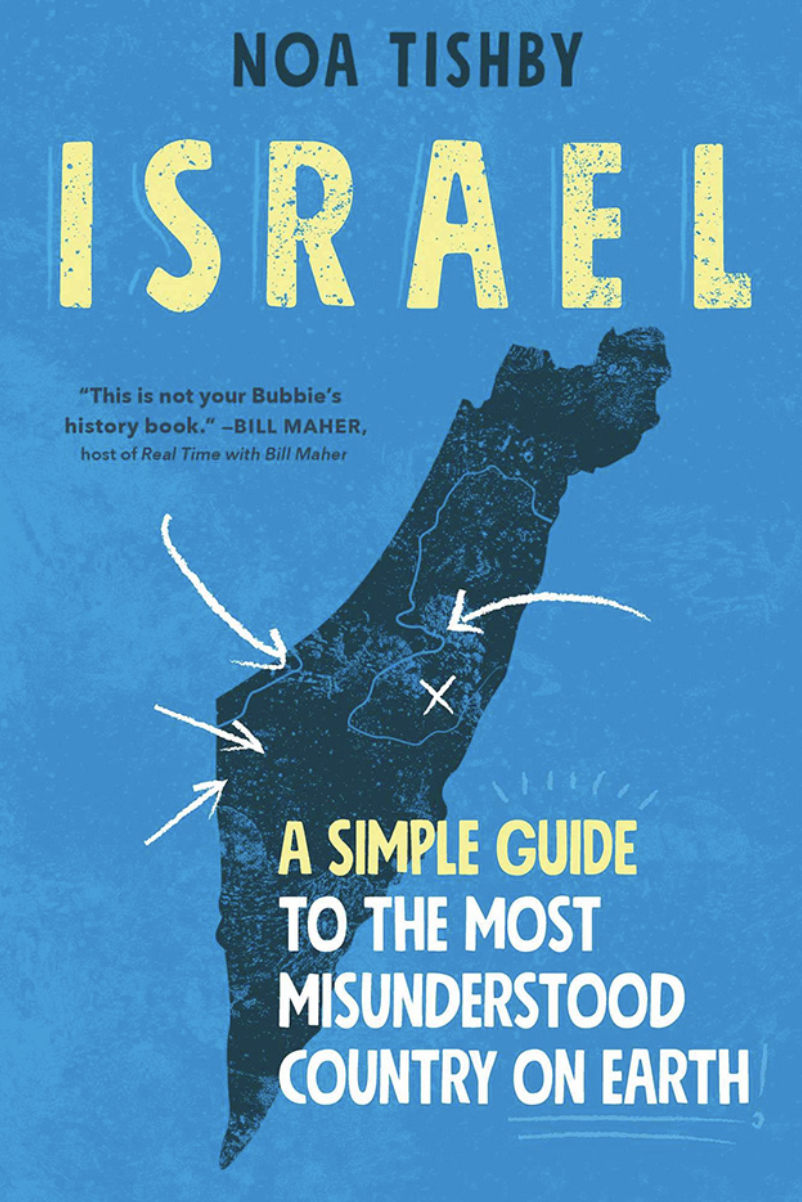 This is one of the most informative, remarkable, and interesting books about Israel that I have ever read. Granted, I am not the most sophisticated person about the history of the Jews throughout all time nor even do I claim to know all the players in conflicts since the formation of Israel as an independent country. The author of this book does provide an in-depth knowledge and insight into the history, the key players, and the clash of cultures. She also clarifies the discrimination against the Jews and against Israel not only dating back to ancient times, but before and after the Holocaust. One only has to appreciate the number of Arabs living in Israel now with full citizenship and even being represented in the Israeli parliament the Knesset and yet the continued BDS movement– Boycott, Divest, and Sanction Israel coming from the overwhelming majority of the Arab world that continually is trying to destroy Israel and the Jews.
This is one of the most informative, remarkable, and interesting books about Israel that I have ever read. Granted, I am not the most sophisticated person about the history of the Jews throughout all time nor even do I claim to know all the players in conflicts since the formation of Israel as an independent country. The author of this book does provide an in-depth knowledge and insight into the history, the key players, and the clash of cultures. She also clarifies the discrimination against the Jews and against Israel not only dating back to ancient times, but before and after the Holocaust. One only has to appreciate the number of Arabs living in Israel now with full citizenship and even being represented in the Israeli parliament the Knesset and yet the continued BDS movement– Boycott, Divest, and Sanction Israel coming from the overwhelming majority of the Arab world that continually is trying to destroy Israel and the Jews.
The author, aside from being an outstanding writer, has been an entertainer and even a comedian. She writes with a lively style and backs up everything with historical facts.
I recommend very strongly that everyone who has an interest in the history of Israel (and hopefully even though those who have been oblivious to the history of the Jews and Israel) should read this book. The insight and clarity you will have will help make the world a better place.
Comment » | HI - History, P - Political
October 4th, 2019 — 9:53pm
How to Fght Anti-Semitism by Bari Weiss
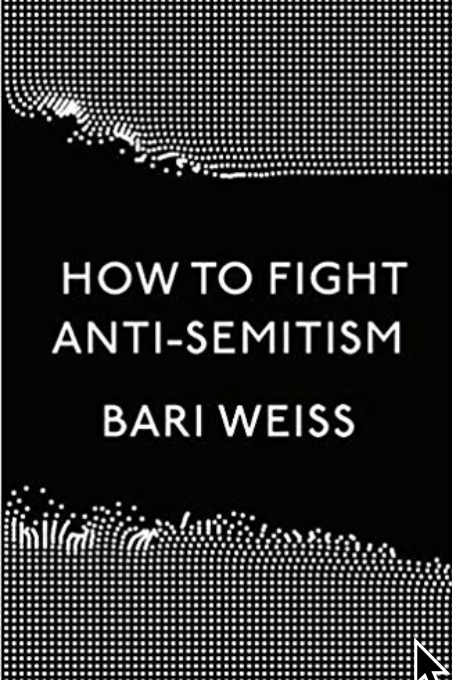 I believe that this book was one of the most important books that I have read in a long time. Certainly, it is true because I am a Jew who has been aware of the historic and contemporary antisemitism. However, I think this book has equal relevance to both Jews and non-Jews who may not have thought about the subject but yet have concerns about some of the serious injustices which continue to exist in our world.
I believe that this book was one of the most important books that I have read in a long time. Certainly, it is true because I am a Jew who has been aware of the historic and contemporary antisemitism. However, I think this book has equal relevance to both Jews and non-Jews who may not have thought about the subject but yet have concerns about some of the serious injustices which continue to exist in our world.
One of the critical lenses through which the author viewed this subject is in the discussion of the meaning and importance of the state of Israel. While she is aware that Israel may be far from perfect, she clearly exposes the anti-Israel views as expressed in in the BDS slogan (boycott, divest, and sanction)by people who want to eliminate the state of Israel This type of thinking is clearly the result of deep-rooted antisemitism even though some of it may come from Jews themselves when talking about Israel.
The author also examines the flawed and historic stereotyping of Jews and the dangerous way of thinking which has led to the pogroms, the holocausts, and other hideous events in human history.
Most fascinating is the author’s crystal-clear exposition how antisemitism can exist in the United States and throughout the world on the political left as it does on the political right. Once you are aware how it is expressed, you can see it all around you by “well-meaning” people who have had stereotyped views implanted deeply-rooted in their thinking and yet with the potential to so easily emerge.
We recently heard this young author speak at a local event and we were very impressed by her knowledge, insight, and empathy for the thought processes in the perpetuators as well as in the objects of antisemitism. Also, during the recent Jewish holiday, we were aware of at least two sermons by different rabbis who dealt with the subject of antisemitism in a similar manner as expressed in this book. Whether or not they had read this book, we strongly recommend that you should read it.
To order this book from Amazon please click here
Please leave any comments below
Comment » | HI - History, P - Political, Uncategorized
February 15th, 2018 — 12:18am
Underground in Berlin: A Young Woman’s Extraordinary Tale of Survival in the Heart of Nazi Germany by Marie Jalowicz Simon (translated by Anthea Bell with a foreword and afterword by Hermann Simon)
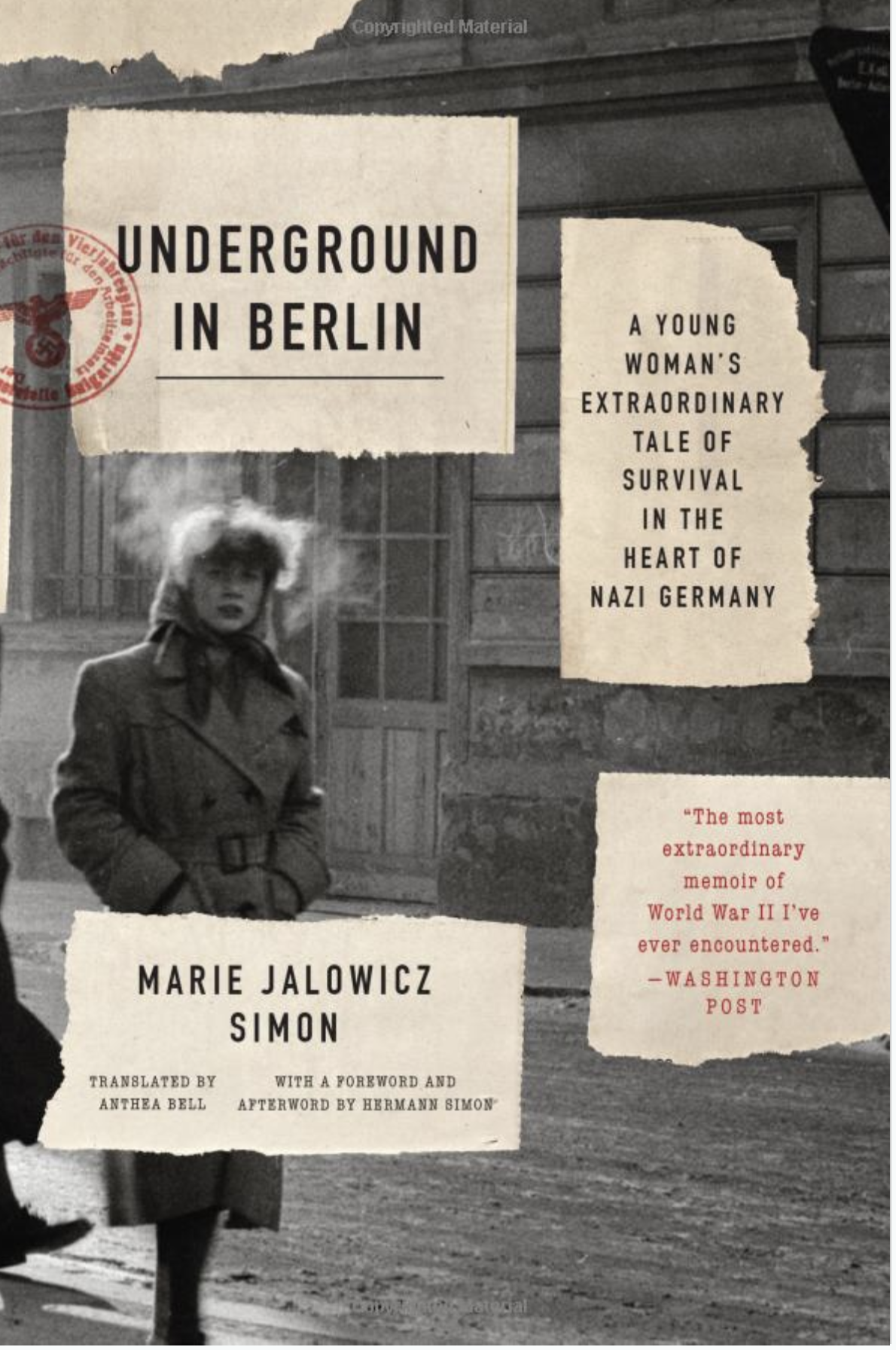
Hermann Simon knew his mother as a loving parent who was a Professor of Classical Antiquities at the Humboldt University of Berlin. He also knew that his mother survived World War II by staying and hiding most of the time in Berlin. During that period in Berlin, so she would not be discovered as a Jewish girl in her 20s and sent to a concentration camp. She rarely spoke about this experience and her son really didn’t know the details. Shortly before her death in 1998, he put a tape recorded in front of her and she agreed to tell her story.
Not only did Ms. Simon tell the story chronologically in vivid detail, but she also revealed her inner thoughts and feelings. She related how at first she wore the yellow Jewish star as was expected to be worn by all Jews in the city, although periodically she would hide it. She did the required work in a German factory making screws for war weapons. Then when her parents were “deported” and nobody knew exactly what their fate would be, she decided to “go to ground” which meant to go underground living in Germany. She hid her Jewish identity and found temporary lodging with non-Jewish friends. She would spend a few days or a week or two and then have to move on and try to find some other place to live.. At times, the circumstances was such that she had to give sexual favors and even got married for a short time in order to have a place to live. She had trouble getting food and most of the time she was in great hunger. Sometimes she had to sit in a wicker chair for hours at a time or sleep in the makeshift bed in the corner of somebody’s apartment who was risking their own lives by hiding her.
She was “underground” for about three years. She recalled not only the details of each phase of her hiding but painted a clear picture of the people she met and with whom she interacted. But most interesting was her ongoing recounting of her fears and feelings as she walked around the city or read books in an uncomfortable living arrangement with constant hunger. There’s no complicated plot or strongly unforgettable characters (other than Ms. Simon). We could appreciate the kindness of so many people who risked their lives to hide her. Her experience after the Russians liberated Berlin was also quite interesting.
We owe a debt of gratitude to Ms. Simon and her son for leaving the legacy of her experience as the young Jewish woman in Berlin during the war who “went to ground.” This book may not achieve the literary acclaim of some of the classic Holocaust books, but I still found it unforgettable. We all should be appreciative that the author and her son made the effort to preserve her story for future generations.
Please leave any comments below
To purchase a copy of this book on Amazon, please click here
Comment » | Uncategorized
January 6th, 2018 — 12:37am
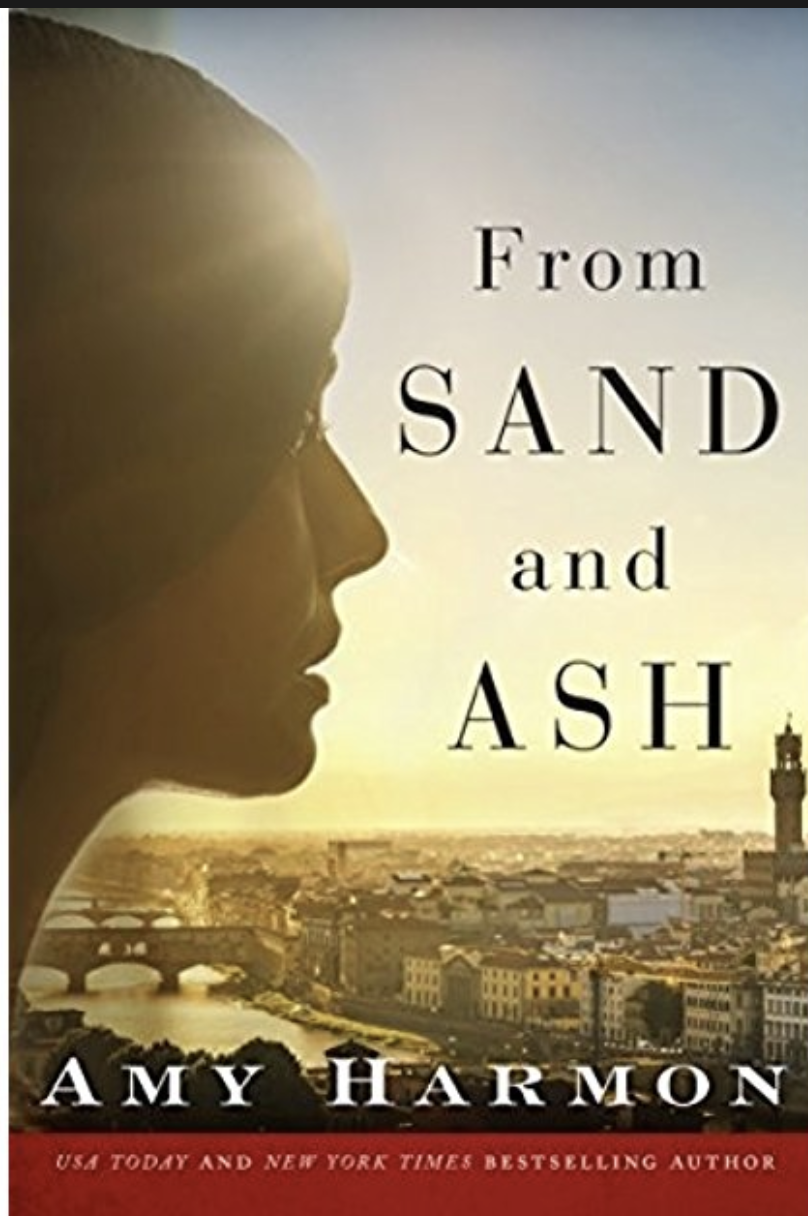 From Sand and Ash by Amy Harmon
From Sand and Ash by Amy Harmon
If I had to make a list of the books that made the greatest impression upon me, I’m pretty sure I would include the Diary of Anne Frank, Schindler’s List and Sophie’s Choice. Not surprising these books all deal with the Holocaust. Growing up in the post World War II, I became acutely aware of the details of what was done to the Jewish people in Europe in the previous decade. My own relatives who are not “survivors” but had family in Europe who perished during that period of time rarely talked about the details which probably fueled my interest. Being Jewish, I felt a personal connection to understand this horrific period of history. As a young psychiatrist working in Brooklyn, I treated a number of children of concentration camp survivors which made a lasting impression on me.
In the past few years, several excellent books which delved into this subject have been reviewed in this blog. This includes How we Survived, The Nightingale, All the Light We Cannot See, Once We Were Brothers, Maus I&II and The Book Thief.(you can click these titles to see my review of each of them )
This current novel From Sand and Ash by Amy Harmon examines the impact of the Holocaust in Italy. In particular, it puts a light on the heroic efforts of members of the Catholic clergy who secretly risked their lives to save many Jews who had become the target of the fascist government of Mussolini which was was allied with Hitler.
The main characters are a Catholic priest and a Jewish young woman who grew up together since childhood. The author in the postscript revealed that these characters were fictional but all the horrible events depicted were real and based on factual events. The author appeared to pay close attention to historical details at the same time that she wrote a beautiful love story. As I finally closed the book after completing it I asked myself three familiar questions: How could so many people do such terrible things to the Jews? How did some people develop the courage to risk their lives and the lives of their families to try to hide and save so many Jews. What would I have done if I had faced the challenges of that time period?
This is a well-written book that may not answer these questions but will provide a page turning experience, which will hold your interest and attention as well as connecting to your emotions.
To purchase this book from Amazon, please click here
Comment » | FH - Fiction Historical, FR - Fiction Romance, Uncategorized
June 4th, 2016 — 12:30am
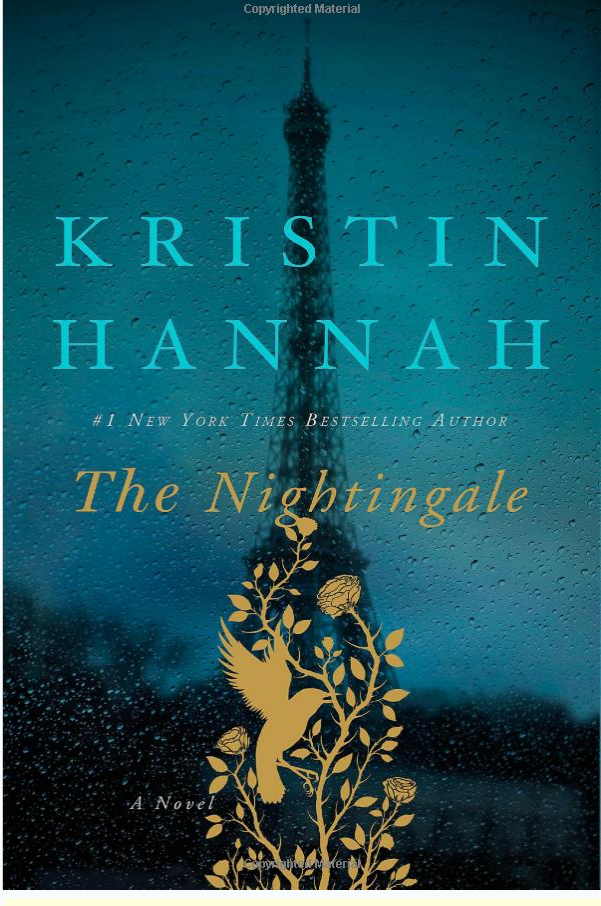 The Nightingale by Kristin Hannah
The Nightingale by Kristin Hannah
If there is any book that has greatly contributed to my understanding of the bravery and resilience of victims of Nazi, Germany it was The Diary of Anne Frank. That book was written by a teenage girl who was hiding in Amsterdam for two and half years until she and her family were betrayed and she was killed. There have been many subsequent books about World War II and the Holocaust. Yet none of them has done it better than The Nightingale by Kristin Hannah, an American novelist who was a lawyer turned writer. She did not go through any horrendous experiences as did Anne Frank and others in her own life but she obviously is a thorough researcher and a very skilled, sensitive writer who has written many successful novels prior to this number one bestseller.
Ms. Hannah has told the story how she came across the account of a Belgian woman, Andrea DeJoneg who was part of the underground resistance during World War II and guided many downed Allied pilots across the Pyrenees Mountains into Spain at the risk of her own life. Based on her research and her insight into the human psyche, Ms. Hannah was able to create the characters of this book. She recounted the acts of tremendous bravery that were shown by her protagonists and she was empathically able to describe their emotional experiences in a very believable manner.
The author focused mainly on women, particularly two sisters, Vianne and Isabelle Mauriac who were not Jewish and lived in Carriveau, a small French village that was occupied by the Nazis during World War II. The reader comes to understand the backstories of these women. Isabelle, the rebellious one, ultimately becomes a very brave woman who shepherds downed British and American pilots across the rugged mountains to safety, risking the severe repercussions which she knew would happen if she were caught.
Her sister Vianne became a heroine in her own right, hiding Jewish children when their parents were taken away by the Nazis. Her actions reawakened questions that we have asked ourselves over the years. Would we have taken in a child (or an adult) to hide or disguise them, when to have been discovered would not only endanger our lives but those of our children? There was another point in question raised by this book when at the end of the war Vianne is faced with the prospect of now having to give up her five- or six-year-old child that she has raised for the past few years when her Jewish friend was taken away to the concentration camps. Now after the war was over, relatives of the deceased Jewish parents want to take this child to America so family there can raise him. But perhaps the most challenging question that the characters in this book face is whether Vianne should tell her husband, who returned home after being a POW held by the Nazis, that the pregnancy with the child that he now feels is his child, but was actually conceived shortly before they reunited, is really the pregnancy of the brutal rape from the German officer who made her house his living quarters before he retreated with the Nazis when the Allies liberated France. Should she have told her husband the truth and should she now more than 40 years after the end of the war tell the truth to the now grownup child who is a successful surgeon and very attentive to his mother.
It is these stories as well as the vivid description of life in occupied France as well in the concentration camps, which are part of this novel that makes this book so unforgettable. It well deserves the acclaim that it is receiving and I’m sure it will be made into an unforgettable movie.
To obtain a copy of this book from Amazon, please click here
Comment » | FG - Fiction General, FH - Fiction Historical
December 22nd, 2014 — 4:50pm
My Promised Land by Ari Shavit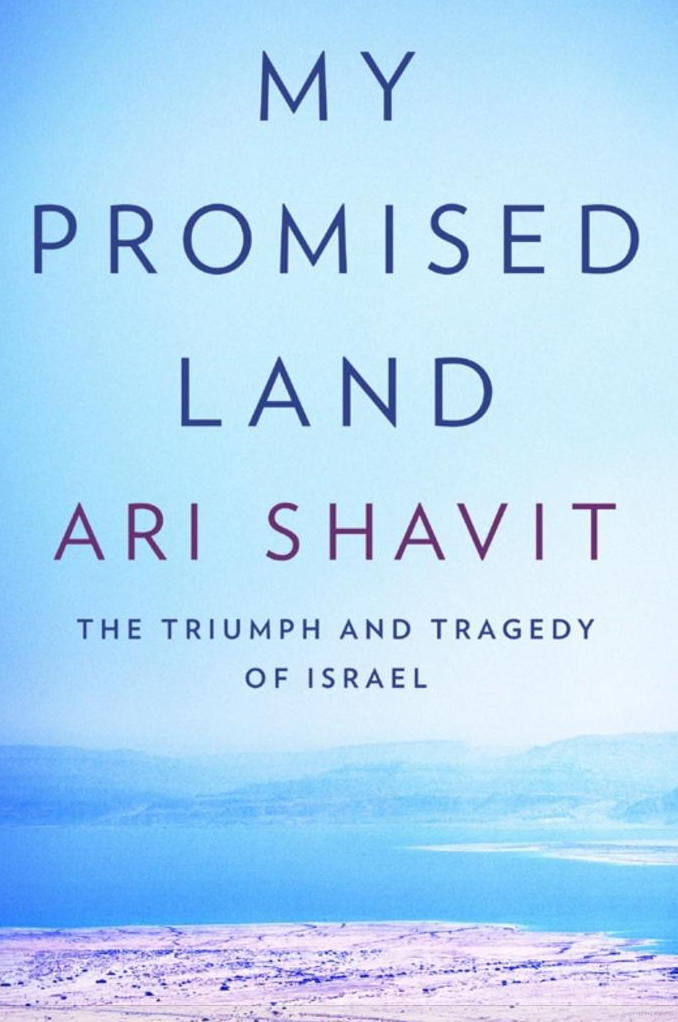
If you have any familiarity with the politics of the Middle East and the establishment of the state of Israel you know it is a very complicated story. Ari Shavit is an Israeli who cares deeply about the future of his beloved homeland. He has written what appears to me to be a definitive comprehensive book about the history of modern Israel. In the course of writing this book, he has done extensive research and has interviewed hundreds of people, many who have been key players in the amazing story of Israel. Shavit is a well-established journalist who personally knows many of these people. Others agreed to meet with him apparently because of his good reputation. I am not in a position to judge if he has all his facts straight and if he has given a balanced view. I can only say that it appears that he has tried to understand and present numerous points of view, This has to be a painful book to anyone who has an affinity for Israel and what this country has meant to so many people.
Naturally, Shavit covers the story of the European Jews who escaped annihilation from the Holocaust and how many of them with literally the shirts on their back built kibbutzim, moshavim, new cities, orange groves and so much more. The transformation from scorched dessert into fertile farms while on the surface is a magical story but is one of tremendous work and dedication. Similarly the development of Tel Aviv into one of the great cities of the world seems like a fairy tale but in reality reflects the courage and the personality of the people who came to Israel.
The spirit and the work ethic of the people who made up the Zionist movement is not the only story of Israel. There is also a narrative of continued bloodshed, conflicts, ethical dilemmas and an uncertainty about the future. The 1948 declaration of a State of Israel by the United Nations was followed by an attack by the surrounding Arab countries, which is a well known important piece of history. As are the 1967 War and the 1973 Yom Kipper War. The details and the meanings behind these wars are discussed in great detail in this book. Shavit doesn’t stop there; he examines and discusses the displaced natives of Palestine and other parts of Israel where many Arabs have lost their homes. While many Arabs do live in harmony in what is now Israel, it clear that many live for the day that they can regain what they feel is rightfully their land. Then there is the situation of the Jewish settlements on the Palestine west bank. On one hand, this is viewed as undermining the one just possibility for a two state solution that might lead to long lasting peace. On the other hand, there is also the point of view of the settlers which they present as a moral and deep seated justification for what they are doing.
There is the story of the Sephardic Jews in Israel, many of whom have felt greatly discriminated against. As with each issue the author brings to life the point of view of the protagonists by not only reviewing factual historical events but also by telling compelling personal stories of the people involved.
Perhaps one of the most important subplots of the story of Israel is a secret chapter that cannot be officially told. On the other hand it is well known and documented by Shavit. In this case he does this by using mostly non-Israeli and certainly non-official sources. This is the fascinating tale but certainly true story of the development of the city of Dimona, which is where Israel mobilized it’s human resources, with some help from France, to develop nuclear weapons. While this unacknowledged fact is stated with great certainty, Israel has never overtly used this as a threat but it nevertheless has been essential for the survival of Israel.
If Dimona were the big secret that I heard about before reading this book, the discussion of the magnitude of threat to Israel from Iran was something that I never fully appreciated. The author in his meticulous style reviews the response of Israel to each step that Iran has made to develop their own nuclear weapon capacity. This includes a daring secret air attack by Israel in 1981 which demolished Iran’s nuclear plants, which were on the verge of producing weapon grade nuclear material. This leads us to the present and one of the major dilemmas that Israel faces today. Once again Iran, a country that has sworn to destroy Israel, is approaching the ability of developing nuclear weapons.
I hope I have made the point that Ari Shavit has written an amazing book that has vividly described in depth so many of the historical events that have allowed Israel to develop and flourish, as well as the issues that question Israel’s viability to survive in the future as it exists today.
Comment » | HI - History, P - Political
August 14th, 2014 — 5:28pm
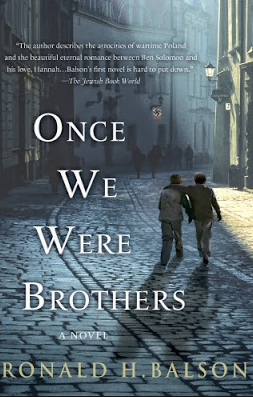 Once We Were Brothers. – By Ronald H. Balson- I am always interested in another Holocaust novel. Perhaps I don’t want to forget (how could one forget?). Or perhaps it is the trying to figure out how would I have handled these horrible situations had I been born a few generations earlier where some of my ancestors had lived and died. It helps that the author in this case; Ronald Balson has a fresh perspective. He introduces us to situation where Ben Solomon, an elderly Holocaust survivor confronts Elliot Rosenzweig, a very wealthy Chicago philanthropist, of actually being Otto Piatek, a prominent Nazi who executed many Jews in Poland during WW II. On top of this he tells a story how Otto as a young boy had been taken into his household before the war after his own parents abandoned him. When the Nazi’s came to power his parents returned to take the 18 year old back to Germany where he became a high-ranking Nazi who was soon to be assigned to Poland. The now wealthy Chicago man denies this accusation and the plot unfolds as Ben relates his story to Catherine who he hopes will be his attorney in what he wants to be a public lawsuit to expose this man for stealing his and other family’s money and jewels as well as participating in the murder of so many Jews. Ben painfully reveals his memory of the events of his childhood growing up with this man and the hope that Ben’s parents had that the child they had taken in would help them from his new position. Using this vehicle, the horrific details of the plight of the Jews in Poland are related. So many historical details were worked into the story that I had the impression that this first time author had on his writing desk a history book of all the events that happened in Poland at that time There were twists and turns but there were all familiar situations: the gradual tightening of the noose around the neck of the Jews as they were moved into the Ghetto and eventually were taken to concentrations camps. There was the good Priest hiding some Jews and the underground resistance doing it’s thing and of course the horrendous course of events for so many Jews. It was also a personal story of certain people who we came to know and care about as events transpired during the war and now in modern times as the possibility of a legal trial became a reality.
Once We Were Brothers. – By Ronald H. Balson- I am always interested in another Holocaust novel. Perhaps I don’t want to forget (how could one forget?). Or perhaps it is the trying to figure out how would I have handled these horrible situations had I been born a few generations earlier where some of my ancestors had lived and died. It helps that the author in this case; Ronald Balson has a fresh perspective. He introduces us to situation where Ben Solomon, an elderly Holocaust survivor confronts Elliot Rosenzweig, a very wealthy Chicago philanthropist, of actually being Otto Piatek, a prominent Nazi who executed many Jews in Poland during WW II. On top of this he tells a story how Otto as a young boy had been taken into his household before the war after his own parents abandoned him. When the Nazi’s came to power his parents returned to take the 18 year old back to Germany where he became a high-ranking Nazi who was soon to be assigned to Poland. The now wealthy Chicago man denies this accusation and the plot unfolds as Ben relates his story to Catherine who he hopes will be his attorney in what he wants to be a public lawsuit to expose this man for stealing his and other family’s money and jewels as well as participating in the murder of so many Jews. Ben painfully reveals his memory of the events of his childhood growing up with this man and the hope that Ben’s parents had that the child they had taken in would help them from his new position. Using this vehicle, the horrific details of the plight of the Jews in Poland are related. So many historical details were worked into the story that I had the impression that this first time author had on his writing desk a history book of all the events that happened in Poland at that time There were twists and turns but there were all familiar situations: the gradual tightening of the noose around the neck of the Jews as they were moved into the Ghetto and eventually were taken to concentrations camps. There was the good Priest hiding some Jews and the underground resistance doing it’s thing and of course the horrendous course of events for so many Jews. It was also a personal story of certain people who we came to know and care about as events transpired during the war and now in modern times as the possibility of a legal trial became a reality.
Although I have experienced many other books and movies about the Holocaust, I was still engrossed and moved by this book. It was not one of the best of the lot on this subject but if you are drawn to this subject you will not be disappointed.
Comment » | FH - Fiction Historical
June 17th, 2013 — 7:32pm
 Maus I & II- by Art Spiegelman Reviewed by Lucy Blumenfield (Age 12) – Although there are other books that tell the tale of the Holocaust through a survivor’s perspective, this book is unique. It is the story, and it is true, about a man—Art Spiegelman, the author—who interviews his father—Vladek Spiegelman to preserve his story of the Holocaust, and illustrating this story in the form of a graphic book. Spiegelman uses animals to express the way different groups of people in this book might act. For example, he uses mice as the Jews, cats as the Germans, and pigs for this Poles. This really intensified the book because it kind of showed you who someone was and also made a political statement in my view. Spiegelman’s illustrations make this haunting story come to life as he tells about his father’s struggles: first hiding in house to house with his wife, trying to escape Poland, and finally being captured and put into Auschwitz, and after ten months being freed and reuniting with his wife. The book changes back between Art’s visits to his not-in-great-shape father in Rego Park, and his father’s experiences told by Vladek.
Maus I & II- by Art Spiegelman Reviewed by Lucy Blumenfield (Age 12) – Although there are other books that tell the tale of the Holocaust through a survivor’s perspective, this book is unique. It is the story, and it is true, about a man—Art Spiegelman, the author—who interviews his father—Vladek Spiegelman to preserve his story of the Holocaust, and illustrating this story in the form of a graphic book. Spiegelman uses animals to express the way different groups of people in this book might act. For example, he uses mice as the Jews, cats as the Germans, and pigs for this Poles. This really intensified the book because it kind of showed you who someone was and also made a political statement in my view. Spiegelman’s illustrations make this haunting story come to life as he tells about his father’s struggles: first hiding in house to house with his wife, trying to escape Poland, and finally being captured and put into Auschwitz, and after ten months being freed and reuniting with his wife. The book changes back between Art’s visits to his not-in-great-shape father in Rego Park, and his father’s experiences told by Vladek.
This book was a unique experience because I have not seen history told by graphic novels before. However, it was an experience that I want more of! It was informative, captivating, humorous in parts, moving, and—at times—heart breaking. I highly recommend this book to everyone, from adults to children because it gives you an insight to the horrifying experiences of the Holocaust in a whole new way.
1 comment » | H - Humor, HI - History, O - Other - Specify, P - Political, T - Recommended for Teenagers
March 31st, 2012 — 11:12am
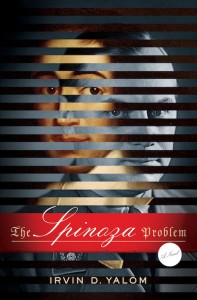 The Spinoza Problem: A Novel: by Irvin D. Yalom– Irvin Yalom is a prominent psychiatrist who is now Professor Emeritus at Stanford Medical School He is a well published author who is known for his outstanding books on group therapy. He also has written books about case histories and relationships, which have been very well received by the public including Love’s Executioner and Staring At the Sun, which addresses death and dying. In addition he has authored a few novels including When Nietzsche Wept and this latest book published in February 2012, The Spinoza Problem.
The Spinoza Problem: A Novel: by Irvin D. Yalom– Irvin Yalom is a prominent psychiatrist who is now Professor Emeritus at Stanford Medical School He is a well published author who is known for his outstanding books on group therapy. He also has written books about case histories and relationships, which have been very well received by the public including Love’s Executioner and Staring At the Sun, which addresses death and dying. In addition he has authored a few novels including When Nietzsche Wept and this latest book published in February 2012, The Spinoza Problem.
This very readable novel will be particularly engrossing to those who have some acquaintance with the philosophy of Spinoza or have chosen to put aside any literal understanding of the bible and question the traditional belief in God. It also will have great appeal to readers who are always drawn to trying to get further insight into how anti-Semitism and Hitler were able to flourish in post World War I Germany leading to the rise of Nazism and World War II.
Yalom acknowledges that he always had been fascinated with Spinoza but could never find a way to write about him since very little was known about his personal and inner life. In the foreword of this book he describes a circumstance, which stimulated an idea, which then allowed him to imagine this novel.
The story starts off by introducing the reader to Baruch Spinoza (nicknamed Benito), a brilliant Talmudic student in Holland and Alfred Rosenberg a student in Germany who runs for President of his College class by making an anti-Semitic speech which gets him called on the carpet by two of the faculty, one of whom is Jewish. Each chapter alternates by following the lives of one of these two young men. Spinoza who lived in the 17th century in Holland becomes ex-communicated by his well-known Rabbi because of his heretic views of the bible and his refusal to accept a belief in God, rejecting both ideas as superstitions. Rosenberg lives in the 20th century and experiences the aftermath of Germany’s humiliating defeat in World War I, becomes a writer and an editor, meets a young Adolph Hitler whom he idolizes and ultimately serves. Although they lived nearly 300 years apart, their connection through Spinoza’s writings resulted in nagging questions which Rosenberg pondered most of his life. These may have unconsciously challenged his deeply held anti-Semitic beliefs. On another level the examination of Spinoza’s deconstruction of a religion based philosophy founded on myths and superstitions highlights the flaws of the deeply held views of Hitler and so many of his followers.
Yalom offers this book as completely factual except for the personal life and inner thoughts of each of the protagonists and the connection that he imagines between the two. There are however some reasons that Yalom has for believing that Rosenberg could have been bothered by the problem that some earlier great German minds valued the writings of “Spinoza the Jew.” The real lives of both men are well known. This includes the details of the ex-communication of Spinoza from his Jewish community and the actual writings of Spinoza. Rosenberg’s life and ultimate death by hanging as a war criminal have been well documented and his views were widely disseminated, as he was an editor of a prominent Nazi newspaper as well as holding other important positions under Hitler.
There are records that show that Rosenberg did spend some time hospitalized in a Psychiatric Clinic during his Nazi years. Yalom creates therapy sessions between Rosenberg and a made up German psychiatrist who is not sympathetic to his vision. Yalom obviously does this, as he imagined the method in which he would approach Rosenberg if he were his psychiatrist.
Another made up character is Franco who is depicted as a friend and follower of Spinoza, who believes that Judaism should be changed from the inside rather than completely discarded in place of a new philosophical view of God as Nature, which was Spinoza’s view. This character becomes a Rabbi and plans to leave Europe and come to the New World and found a new religion. In the epilog of the book Yalom suggests that he was making a reference to Mordecai Kaplan a 20th century pioneer of modernized and secularized Judaism known as the Reconstruction movement in the U.S. (although Kaplan’s trajectory was somewhat different than the character in the book).
Also in the epilog of the book Yalom quotes the wisdom that, History is fiction that happens. Fiction is history that might have happened.
This novel successfully weaves the two together in a stimulating, thought provoking and quite enjoyable novel.
Comment » | FH - Fiction Historical
September 4th, 2009 — 5:50am
The Book Thief by Markus Zusak
by Markus Zusak
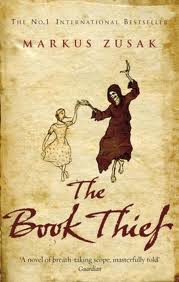 My initial experience with the book was somewhat negative. First, finding the book in the teen department of Barnes & Noble seemed somewhat curious. I had difficulty getting in to the book as the style and narrative seemed unusual and in retrospect perhaps uncomfortable as it seemed to be written from the point of view of an angel of death. Perhaps after about 50 pages I was comfortable with the book and was being drawn in to it although I could still easily put it down.
My initial experience with the book was somewhat negative. First, finding the book in the teen department of Barnes & Noble seemed somewhat curious. I had difficulty getting in to the book as the style and narrative seemed unusual and in retrospect perhaps uncomfortable as it seemed to be written from the point of view of an angel of death. Perhaps after about 50 pages I was comfortable with the book and was being drawn in to it although I could still easily put it down.
I also felt an early identification of Liesel with my seven year old granddaughter who has recently fell in love with words and books. This connection began to give me an added emotional attachment to the characters and the story which I usually have anyway to a holocaust book. I felt the author was making a meaningful insight to me as he spoke about Kristolnacht and clearly conveyed how the Nazis were bent on destroying words and the ideas behind them perhaps just as much as they were displacing their frustrations and hate on the Jews. As the book progressed – it became a page turner for me. The author used an interesting style of foreshadowing the events coming in each chapter which toyed with my anxiety and concern about the characters but yet I couldn’t be sure what was going to happen. I began to realize that I was developing great empathy and caring for the characters who were German non-Jews. I desperately wanted the characters who went off to fight the allies to survive. When the Jews were marched through the streets on their way Dachau Concentration Camp – I was accepting the idea that most of the observers were neutral and of course the main characters were heroic in wanting to give them bread.
By the conclusion of the story I of course was fully on board with the idea that all war is terrible and I felt very badly that most of the characters had been killed. I was touched that Liesel and Max had survived and were together. But what did they do with their life and did they feel guilty about what had been done to the Jews? The author who obviously was not Jewish said that he wrote the story based on memories of stories that his parents have told him from Austria and Germany and he wanted to show that not all Germans were bad. I found this quote from him on the Internet:
One day, there was a terrible noise coming from the main street of town, and when she( his mother) ran to see it, she saw that Jewish people were being marched to Dachau, the concentration camp. At the back of the line, there was an old man, totally emaciated, who couldn’t keep up. When a teenage boy saw this, he ran inside and brought the man a piece of bread. The man fell to his knees and kissed the boy’s ankles and thanked him…Soon, a soldier noticed and walked over. He tore the bread from the man’s hands and whipped him for taking it. Then he chased the boy and whipped him for giving him the bread in the first place. In one moment, there was great kindness and great cruelty, and I saw it as the perfect story of how humans are.
Therefore I reflect that at best this 30 year old author is an apologist for the Germans of the Nazi era and at worst has little appreciation for what really happened in the holocaust. Therefore I find myself negatively inclined toward him and what he had to say. He is a talented writer and wrote a great book . I am glad I read it but I wouldn’t recommend it to everyone and I am not sure to whom I would urge that they should read it. I recognize that this is a very personal reaction but it is the way I find myself feeling at this time.
Comment » | FH - Fiction Historical
 This is one of the most informative, remarkable, and interesting books about Israel that I have ever read. Granted, I am not the most sophisticated person about the history of the Jews throughout all time nor even do I claim to know all the players in conflicts since the formation of Israel as an independent country. The author of this book does provide an in-depth knowledge and insight into the history, the key players, and the clash of cultures. She also clarifies the discrimination against the Jews and against Israel not only dating back to ancient times, but before and after the Holocaust. One only has to appreciate the number of Arabs living in Israel now with full citizenship and even being represented in the Israeli parliament the Knesset and yet the continued BDS movement– Boycott, Divest, and Sanction Israel coming from the overwhelming majority of the Arab world that continually is trying to destroy Israel and the Jews.
This is one of the most informative, remarkable, and interesting books about Israel that I have ever read. Granted, I am not the most sophisticated person about the history of the Jews throughout all time nor even do I claim to know all the players in conflicts since the formation of Israel as an independent country. The author of this book does provide an in-depth knowledge and insight into the history, the key players, and the clash of cultures. She also clarifies the discrimination against the Jews and against Israel not only dating back to ancient times, but before and after the Holocaust. One only has to appreciate the number of Arabs living in Israel now with full citizenship and even being represented in the Israeli parliament the Knesset and yet the continued BDS movement– Boycott, Divest, and Sanction Israel coming from the overwhelming majority of the Arab world that continually is trying to destroy Israel and the Jews.
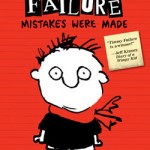
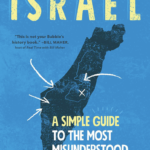
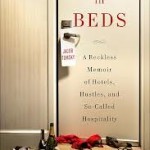
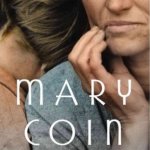
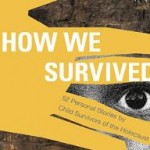
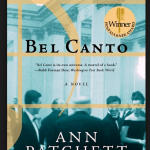
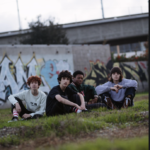
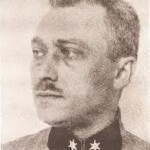
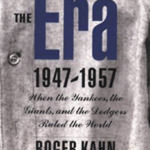
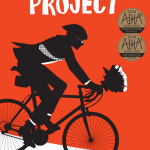



 I believe that this book was one of the most important books that I have read in a long time. Certainly, it is true because I am a Jew who has been aware of the historic and contemporary antisemitism. However, I think this book has equal relevance to both Jews and non-Jews who may not have thought about the subject but yet have concerns about some of the serious injustices which continue to exist in our world.
I believe that this book was one of the most important books that I have read in a long time. Certainly, it is true because I am a Jew who has been aware of the historic and contemporary antisemitism. However, I think this book has equal relevance to both Jews and non-Jews who may not have thought about the subject but yet have concerns about some of the serious injustices which continue to exist in our world.
 From Sand and Ash by Amy Harmon
From Sand and Ash by Amy Harmon The Nightingale by Kristin Hannah
The Nightingale by Kristin Hannah

 Maus I & II- by Art Spiegelman Reviewed by Lucy Blumenfield (Age 12) – Although there are other books that tell the tale of the Holocaust through a survivor’s perspective, this book is unique. It is the story, and it is true, about a man—Art Spiegelman, the author—who interviews his father—Vladek Spiegelman to preserve his story of the Holocaust, and illustrating this story in the form of a graphic book. Spiegelman uses animals to express the way different groups of people in this book might act. For example, he uses mice as the Jews, cats as the Germans, and pigs for this Poles. This really intensified the book because it kind of showed you who someone was and also made a political statement in my view. Spiegelman’s illustrations make this haunting story come to life as he tells about his father’s struggles: first hiding in house to house with his wife, trying to escape Poland, and finally being captured and put into Auschwitz, and after ten months being freed and reuniting with his wife. The book changes back between Art’s visits to his not-in-great-shape father in Rego Park, and his father’s experiences told by Vladek.
Maus I & II- by Art Spiegelman Reviewed by Lucy Blumenfield (Age 12) – Although there are other books that tell the tale of the Holocaust through a survivor’s perspective, this book is unique. It is the story, and it is true, about a man—Art Spiegelman, the author—who interviews his father—Vladek Spiegelman to preserve his story of the Holocaust, and illustrating this story in the form of a graphic book. Spiegelman uses animals to express the way different groups of people in this book might act. For example, he uses mice as the Jews, cats as the Germans, and pigs for this Poles. This really intensified the book because it kind of showed you who someone was and also made a political statement in my view. Spiegelman’s illustrations make this haunting story come to life as he tells about his father’s struggles: first hiding in house to house with his wife, trying to escape Poland, and finally being captured and put into Auschwitz, and after ten months being freed and reuniting with his wife. The book changes back between Art’s visits to his not-in-great-shape father in Rego Park, and his father’s experiences told by Vladek.
 My initial experience with the book was somewhat negative. First, finding the book in the teen department of Barnes & Noble seemed somewhat curious. I had difficulty getting in to the book as the style and narrative seemed unusual and in retrospect perhaps uncomfortable as it seemed to be written from the point of view of an angel of death. Perhaps after about 50 pages I was comfortable with the book and was being drawn in to it although I could still easily put it down.
My initial experience with the book was somewhat negative. First, finding the book in the teen department of Barnes & Noble seemed somewhat curious. I had difficulty getting in to the book as the style and narrative seemed unusual and in retrospect perhaps uncomfortable as it seemed to be written from the point of view of an angel of death. Perhaps after about 50 pages I was comfortable with the book and was being drawn in to it although I could still easily put it down.